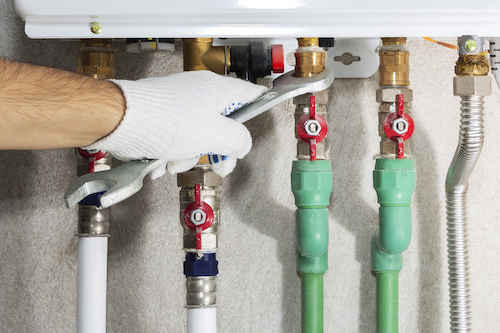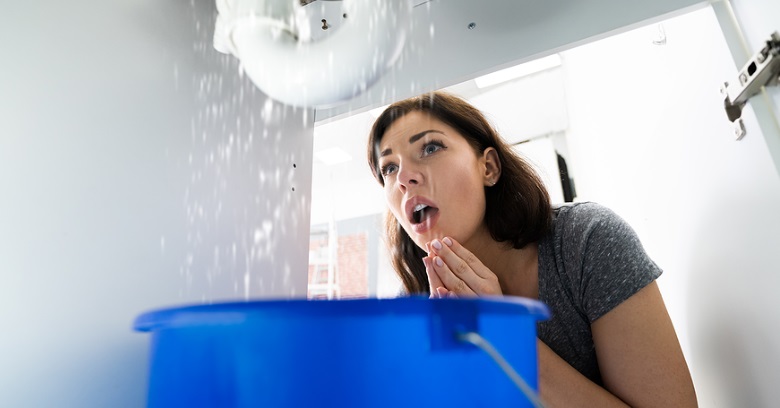What to Efficiently Spot and Fix a Busted Pipe Problem
Call TodayWhat are your thoughts and feelings on How to install a dishwasher safely?

A ruptured pipeline is a significant emergency; you can only stand as you view water you pay a lot to rejoin with the earth. In even worse cases, you observe a swimming pool on your cooking area floor, which is a fantastic journey danger, particularly if you have youngsters around. If the pipe that ruptured was in your wall surfaces, bad news: you might need to repaint that whole area.
Exactly how can a disaster like a burst pipeline be avoided and taken care of? Well, by paying attention to your specialist emergency plumbing professionals and complying with these regulations.
How do I understand when my pipes have ruptured?
Fluctuating water stress
Pipelines do not just burst in a day. You might have noticed that your kitchen area faucet or shower doesn't run instantly when you transform the faucet. It may stop briefly for a couple of seconds and after that blast you with more force than common.
In various other instances, the water may appear normal in the beginning, after that decrease in pressure after a couple of secs.
Wet wall surfaces and also water stains
Before a pipe ruptureds, it will certainly leakage, many times. If this relentless dripping goes unnoticed, the leak may finish right into a wide wound in your pipe. One very easy means to prevent this emergency is to look out for wet walls ad water spots. These water spots will certainly lead you right to the leakage.
Puddles under pipelines and sinks
When a pipe bursts, the discharge forms a puddle. It may appear that the puddle is expanding in dimension, as well as no matter the number of times you mop the puddle, in a few minutes, there's another one waiting to be cleaned. Frequently, you might not have the ability to map the pool to any type of noticeable pipes. This is an indication to call an expert plumber.
Untraceable dripping noises
Pipe bursts can happen in one of the most undesirable areas, like within concrete, inside wall surfaces, or under sinks. When your house goes quiet, you might have the ability to listen to an aggravatingly relentless leaking noise. Even after you've examined your shower head and also kitchen area tap, the dripping may continue.
Beloved visitor, the leaking may be originating from a pipeline inside your walls. There isn't much you can do regarding that, except tell a specialist plumber.
Turn off the Water
When water ices up, it broadens in volume by regarding 9 percent. And also it broadens with remarkable force: The stress inside pipes might go from 40 extra pounds per square inch to 40,000 psi! No pipe can hold that much stress, so it bursts. The break may take place where the ice types, yet more frequently, it takes place where water pressure finds a vulnerable point in the pipeline. That may be inches or perhaps feet from the icy location. Locate the water shutoff valve and switch off the water to avoid more damages. You may also require to shut down the electrical power too, depending upon where the leaks takes place and just how huge it is.
Contaminated water
Many people assume a ruptured pipe is a one-way electrical outlet. Rather the contrary. As water drains of the hole or gash in your plumbing system, impurities find their method.
Your water might be infected from the source, so if you can, inspect if your water container has any problems. Nevertheless, if your alcohol consumption water is supplied and also detoxified by the city government, you must call your plumber instantly if you see or scent anything amusing in your water.
What do I do when I find a ruptured pipe?
Your water meter will remain to run even while your water wastes. To decrease your losses, find the primary controls and also turn the supply off. The water pipe are an above-ground framework at the edge of your building.
How to Fix & Detect a Leaking Pipe
How Do I Know if a Pipe is Leaking?
Leak detection tests can help you determine if your pipe has a leak. Even if you don’t see an apparent leak, you should still conduct leak detection tests regularly to save water and money—and prevent major damage to your home.
Water meter. It can be helpful to figure out what your usual water meter usage numbers are and then monitor them regularly. To monitor your meter, first, turn off all water faucets in your home. Check the meter and write down the numbers. In a few hours, check the meter again. If the numbers have changed, you have a leak. Water gauge. Use a water gauge to test your water pressure. Your showerhead should produce a certain amount of water pressure based on its model and design. If the pressure is lower than it is supposed to be for that specific showerhead, your home likely has a leak. Puddles. Look inside your bathroom, laundry, and kitchen sink cabinets. Puddles around the cabinets or around toilets, tubs, showers, and washing machines indicate the presence of a leaking pipe. You may also notice loose tiles, peeling or flaking paint, or mold caused by water accumulation. Napkin test. Even if you don’t see any puddles, you may still have a leak. You can test for water leaks in the bathroom, laundry, and kitchen by wiping below-sink connections with a napkin, paper towel, or piece of toilet paper. If it becomes damp, you probably have a leaking pipe under the sink. Discolored walls. Walls that are discolored—usually with brown or yellow stains—or bulging might mean that they have been impacted by water damage caused by a leaking pipe. Smell. A leaky pipe will create sitting water, and over time, that water may develop a musty smell. If your home smells musty, but you can’t locate the source, it may be due to a leak. Steps for Fixing a Leaking Pipe
A leaky drain can be remedied by tightening the pipe base, replacing the drain seal, caulking the rim, and tightening the pipe nut. Similarly, a leaking toilet pipe can be treated by tightening the packing nut. You may also need to replace the valve. A leaky faucet may just need tightening or replacement of the washers. If that doesn’t work, consider replacing your faucet. If your pipe has a hole in it, you may want to use a pipe leak sealer or pipe leak tape. This quick fix for water pipe leaks can also temporarily fix a copper pipe leak. https://www.ahs.com/home-matters/quick-tips/how-to-tell-if-pipes-are-leaking/

I recently found that review about How to Install and Connect a New Dishwasher while browsing on the internet. Appreciated our posting? Please share it. Help somebody else find it. I cherish reading our article about How to install a dishwasher safely.
Ring, relax, resolved!